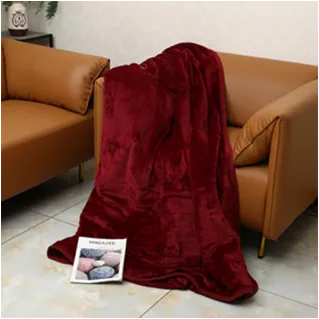Set . 21, 2024 16:43 Back to list
electric blanket kwh
Understanding the Energy Consumption of Electric Blankets
Electric blankets are a popular choice for keeping warm during colder months. As energy efficiency becomes a prominent concern for many households, understanding the kilowatt-hour (kWh) consumption of electric blankets is essential for managing both comfort and costs.
What is kWh?
First, it’s important to grasp what kWh means. A kilowatt-hour is a unit of energy equivalent to one kilowatt (1 kW) of power consumed for one hour. In practical terms, kWh helps consumers understand how much electricity an appliance uses over time, allowing for better budgeting of energy expenses.
How Electric Blankets Work
Electric blankets operate by incorporating electric heating elements within their fabric. When connected to an electrical power source, these blankets generate heat to warm the user. They come with various settings, allowing users to control the level of warmth, which affects energy consumption. Generally, higher settings consume more power.
Energy Consumption of Electric Blankets
The wattage of an electric blanket typically ranges from 60 to 100 watts, depending on the model and its features. To calculate the kWh usage, you can use the formula
\[ \text{kWh} = \left( \frac{\text{Wattage}}{1000} \right) \times \text{Hours Used} \]
For instance, if you use a 100-watt electric blanket for 5 hours, the consumption would be
\[ \text{kWh} = \left( \frac{100}{1000} \right) \times 5 = 0.5 \text{ kWh} \]
electric blanket kwh

Cost Considerations
To translate kWh into cost, you will need to know your electricity rate, which varies by location but averages around $0.12 per kWh in the United States. Using the previous example of 0.5 kWh, the cost for heating the blanket for 5 hours would be approximately
\[ \text{Cost} = 0.5 \text{ kWh} \times 0.12 = 0.06 \text{ USD} \]
This cost is relatively low compared to running other high-energy appliances, making electric blankets an economical option for heating.
Benefits of Using Electric Blankets
Besides their low energy consumption, electric blankets offer several benefits. They provide targeted warmth, which is particularly helpful for those with specific pain areas, such as arthritis sufferers. Additionally, they can potentially reduce the need for higher thermostat settings, leading to overall energy savings in home heating.
Safety Features
Modern electric blankets often come equipped with safety features, including auto shut-off and adjustable temperature controls, enhancing their reliability. It’s crucial to follow manufacturer instructions for use and maintenance to ensure safety and longevity.
Conclusion
In summary, the energy consumption of electric blankets, measured in kWh, is generally low, making them a cost-effective choice for staying warm during winter. By being mindful of how often and how long to use them, consumers can enjoy the benefits of warmth and comfort without incurring high electricity bills. As always, understanding the specifics of energy consumption helps in making informed decisions, contributing to both personal comfort and environmental responsibility.
-
Innovations and Applications of Modern Electric Heating Blankets
Jul.07,2025
-
Innovations and Applications of Electric Fleece Blanket Systems
Jul.07,2025
-
Functional and Cozy Solutions for Personalized Warmth
Jul.07,2025
-
Essential Comfort and Warmth Solutions: Heated Blanket Variants
Jul.07,2025
-
Enhancing Coziness with Warmth - Centric Blanket Solutions
Jul.07,2025
-
Enhancing Comfort and Warmth: Electric Blanket Solutions
Jul.07,2025
Realted Products




